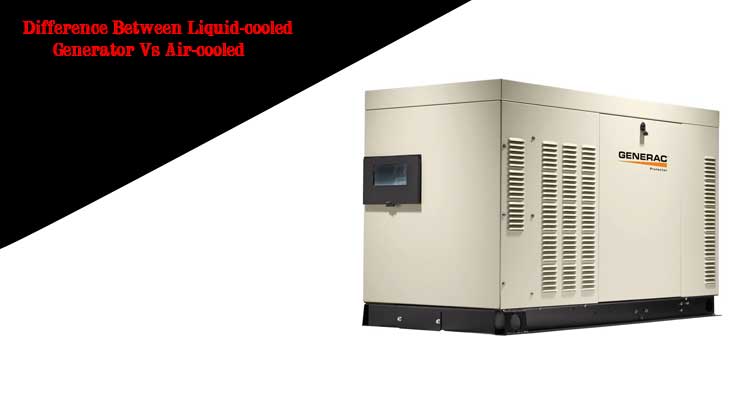Types of Electric Generator
A power generator is a life-saving gadget. It has helped many people during the emergency and when the power from the mains electricity is off. There are many types of power generators. One type is the electric power generator.
A substitute name for an electrical generator is a dynamo for transmission. It is also the circulation of energy through electrical cables for various uses such as in-home, industries, business, etc. Electric generators are also used in airplanes, cars, trains, and ships for generating electrical power. In an electric generator, the mechanical power is produced by a rotating shaft Here, we take a look at the types of electric generators.
What are the types of electric generators
There are many types of electric generators? But all in all, they fall into main classifications; the AC and DC electric generators. We further break down these two classifications.
AC electric generators
These are also known as alternators. It is the main method of generating electric power in a large number of places. In fact, nowadays each of the buyers uses alternating current. It works depending on the rule of electromagnetic induction. Ac electric generators also fall into two further categories, induction, and synchronous generators.
a) The induction AC electric generators
The induction AC electric generator does not require different DC excitation, regulator control, or frequency controller. This comes about when conductor coils rotate in a magnetic field driving a current and a voltage. The induction ac generators should run at a reliable speed to produce a constant AC voltage even when no load is attached.
b) The synchronous AC generators
The synchronous AC generators are large generators that are generally used in power plants. This is further divided into two classes; the rotating armature type or the rotating field type.
1) The rotating armature type
In the rotating armature type, the field is on the stator and armature is on the rotor. The current from the rotor armature is absorbed by slip rings and brushes. These are limited due to the severe wind losses. These are used for applications that need low power output.
2) Rotating field type
The Rotating field type is generally used because of its high power generation capacity and the lack of slip rings and brushes.
They are usually two or three-phase generators.
- Two-phase rotating field type generator
A two-phase rotating field-type generator produces two completely separate voltages. Each voltage can be viewed as a single-phase voltage. Each creates a completely autonomous voltage for the other.
- Three-phase rotating field type
The Three-phase rotating field type has three single-stage windings. The windings are arranged with the ultimate goal of shifting the voltage applied in one phase by 120 ° from the other two.
These generators are equipped with an engine or turbine to be used as an engine-generator set. They are intended to be used in applications such as marine, oil, and gas mining machinery, wind turbines, etc.
In general AC electric generators has some advantages. Due to the lack of brushes, these generators are largely maintenance-free. Moreover, you can easily step up or down the produced power by use of transformers. More so, the size of an AC generator is generally smaller compared to that of the DC machine and there is less power loss.
DC electric generators
A DC electric generator is typically used in off-grid applications. These generators deliver an even supply of power directly to electrical reservoirs and DC grids without any novel equipment. The storage force is supported by DC / AC converters during charging. The DC generators could be driven back to a stationary speed as the batteries are generally animated to recover impressively more fuel.
DC electric generators also have types; the self-excited, separately-excited, and permanent-magnet DC electric generators.
Self-excited DC electric generators
These type of DC generators produce their magnetic field when powered on. They are usually simple in design and require no external circuit. They have further put in different classes namely; series, shunt, and compound generators.
Separately-excited DC electric generators
These type of DC electric generators requires external circuit and produce their magnetic flux. They are also capable of producing variable output.
Permanent-magnet DC electric generators
They use their permanent magnet to produce the needed magnetic flux. As they require no external field of excitation, they are most suitable for low power needs such as dynamo.
There are many advantages of DC electric generators. First, they have a wide range of working characteristics that can be obtained by choosing the technique for exciting the field windings.
More so, it is easy to smooth the output.it can be done by evenly arranging the coils around the armature. This results in fewer fluctuations, which are ideal for some consistent state applications. Lastly, the connection costs are lower compared to their counterpart AC electric generators, because they require no shielding for radiation purposes.
Other types of electric generators
Generators are can be grouped further into several other types, e.g. portable, stand by, and inverter.
Portable generator
Portable generators are used very frequently in various applications and are accessible in various setups through increased performance. These are useful in typical fiascos when mains power fails. They are used in private, lighter-weight business foundations such as stores, retail stores, and construction sites.
In any case, this type of generator is controlled by diesel fuel to produce an instantaneous electrical force.
Stand by generator
This is a type of electrical generator that is used to work through a programmed motion switch that turns it on during power offs from the main electricity. One of the best features of a backup generator is its high power output capacity.
Conclusion
There are many types of power generators. Electric generators are just one type. Also, we have seen that there are many types of electric generators. Each type that we have covered above, best serves its specific purposes.






